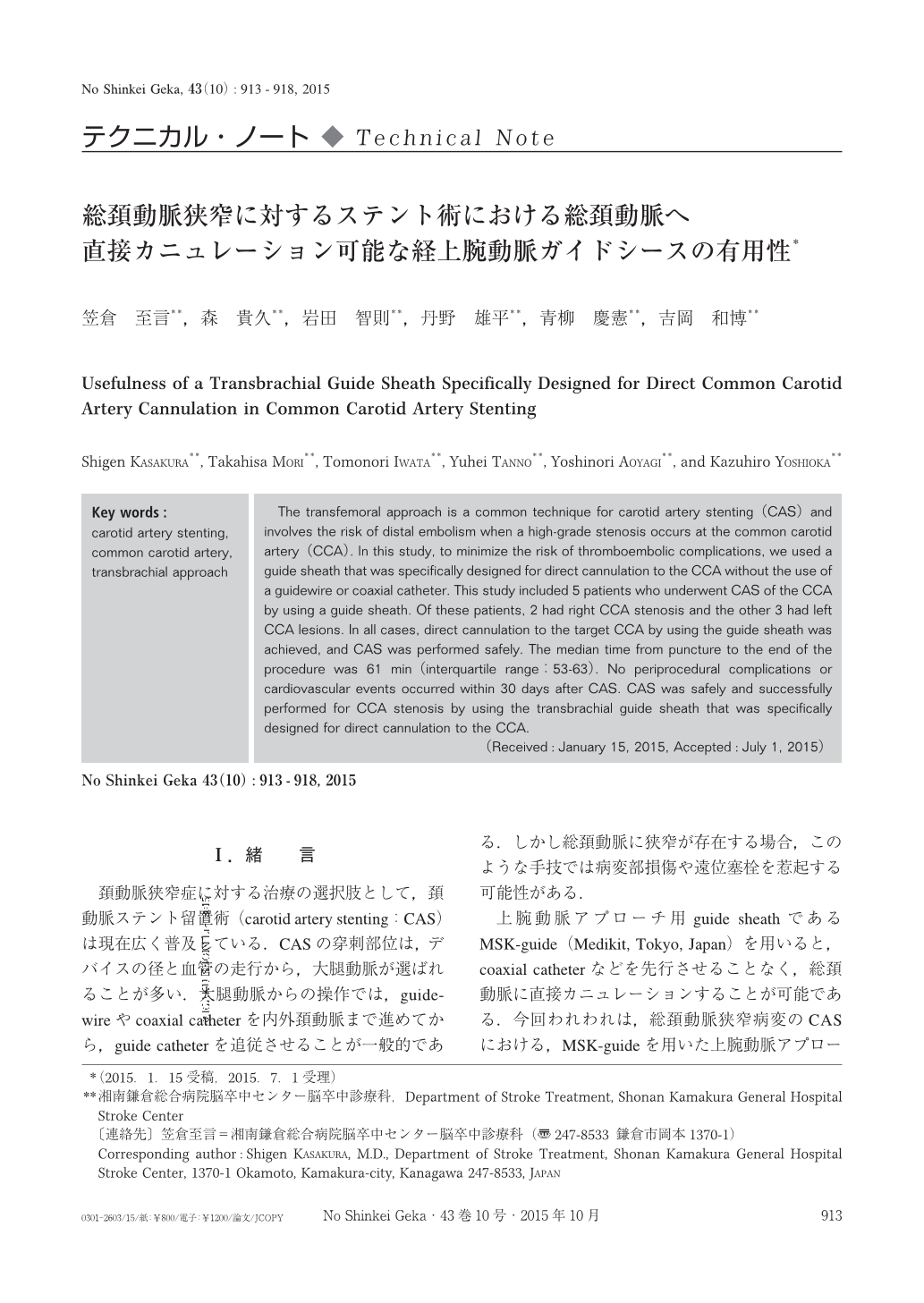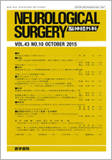Japanese
English
- 有料閲覧
- Abstract 文献概要
- 1ページ目 Look Inside
- 参考文献 Reference
Ⅰ.緒言
頚動脈狭窄症に対する治療の選択肢として,頚動脈ステント留置術(carotid artery stenting:CAS)は現在広く普及している.CASの穿刺部位は,デバイスの径と血管の走行から,大腿動脈が選ばれることが多い.大腿動脈からの操作では,guidewireやcoaxial catheterを内外頚動脈まで進めてから,guide catheterを追従させることが一般的である.しかし総頚動脈に狭窄が存在する場合,このような手技では病変部損傷や遠位塞栓を惹起する可能性がある.
上腕動脈アプローチ用guide sheathであるMSK-guide(Medikit, Tokyo, Japan)を用いると,coaxial catheterなどを先行させることなく,総頚動脈に直接カニュレーションすることが可能である.今回われわれは,総頚動脈狭窄病変のCASにおける,MSK-guideを用いた上腕動脈アプローチの有用性と安全性について検討した.
The transfemoral approach is a common technique for carotid artery stenting(CAS)and involves the risk of distal embolism when a high-grade stenosis occurs at the common carotid artery(CCA). In this study, to minimize the risk of thromboembolic complications, we used a guide sheath that was specifically designed for direct cannulation to the CCA without the use of a guidewire or coaxial catheter. This study included 5 patients who underwent CAS of the CCA by using a guide sheath. Of these patients, 2 had right CCA stenosis and the other 3 had left CCA lesions. In all cases, direct cannulation to the target CCA by using the guide sheath was achieved, and CAS was performed safely. The median time from puncture to the end of the procedure was 61 min(interquartile range:53-63). No periprocedural complications or cardiovascular events occurred within 30 days after CAS. CAS was safely and successfully performed for CCA stenosis by using the transbrachial guide sheath that was specifically designed for direct cannulation to the CCA.

Copyright © 2015, Igaku-Shoin Ltd. All rights reserved.


